
Reading Standard Musical Notation
Introduction
The earliest forms of standard musical notation are believed to date back as far as 2000 BC. Modern music notation originated in European classical music and is now used by musicians of many different genres throughout the world.
The system uses a 5 line stave. The pitch of a note is indicated by placing a note either on or in-between the lines. The notes become higher in pitch as they are placed higher on the stave.
The music is written from left to right. The note that each line represents varies depending on the clef, the symbol that first appears on the stave. There are different types of clef, the G clef or Treble clef and F clef or Bass clef are the most commonly used. Generally you would play notes on the G clef with your right hand and notes on the F clef with your left hand, but this is not always the case.
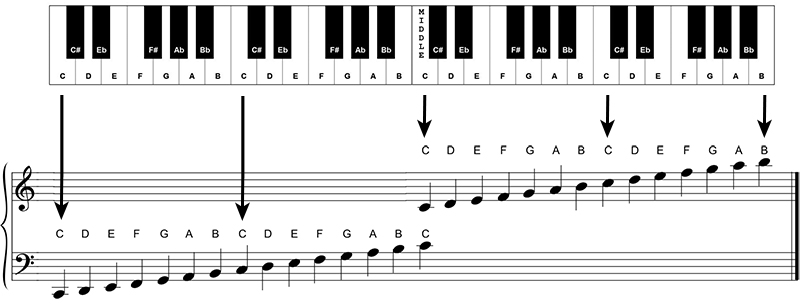
The Treble Clef - G Clef
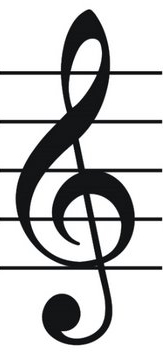
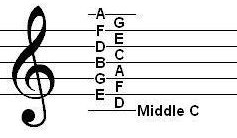
The G clef symbol is supposed to appear like the letter G and the centre of the G clef symbol is positioned around the G note of the stave. By knowing that the second line up is a G all other notes can be worked out.
Notes that represent a pitch outside of the 5 line stave are represented using ledger lines. A ledger line appears as a single dash through or besides the note.
Making phrases out of the notes on a clef will help you remember them. Phrases apply to either the notes on a line or the notes in-between a line. Remembering these phrases will help you quickly work out what a note is.
Face

Every Good Boy Deserves Food

The Bass Clef - F Clef
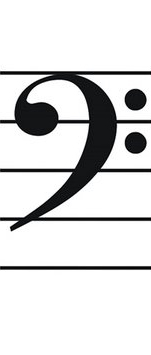
The bass clef also known as the F clef is the name given to the bottom clef on standard piano score.
The F note passes between the two dots of the clef symbol. All other notes on the bass clef can be worked out by knowing this.
The notes as they appear on a Bass clef are demonstrated below.
All Cows Eat Grass

Grizzly Bears Don't Fly Airplanes

Key & Time Signatures
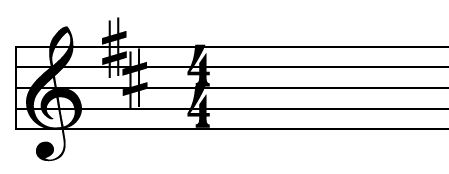
Different key signatures are used to direct you to either flatten or sharpen certain notes.
Following the clef, the key signature on a stave indicates the key of the piece by specifying that certain notes are flat or sharp throughout the piece.
In the example shown the key is D major and the key signature indicates the notes F are C, are played as F# and C#.
Time Signature
Following the key signature is the time signature. The first number shows how many beats are to be played in each bar. The second number shows how long each beat will be. In the example shown there would be 4 times ¼ notes, or crochets, per bar. To find out more on rhythm notation visit our reading standard musical notation rhythm lesson.